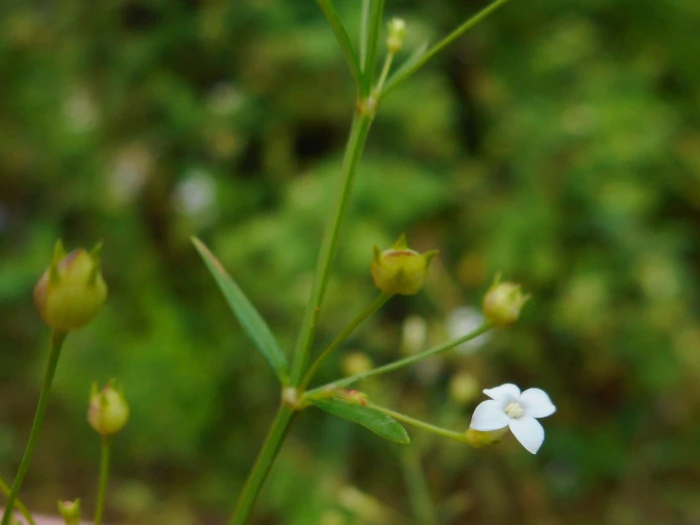Clusterflower Mille Graines
(Oldenlandia herbacea)
Clusterflower Mille Graines (Oldenlandia herbacea)
/
/

Eugene Popov
CC BY 4.0
Image By:
Eugene Popov
Recorded By:
Copyright:
CC BY 4.0
Copyright Notice:
Photo by: Eugene Popov | License Type: CC BY 4.0 | License URL: http://creativecommons.org/licenses/by/4.0/ | Rights Holder: Eugene Popov | Publisher: iNaturalist | Date Created: 2022-10-09T09:19:01-07:00 |
























Estimated Native Range
Climate Requirements for Madison, Wisconsin
| This Plant | Your Site | Plant Suitability for Your Location | ||
|---|---|---|---|---|
| • Precipitation | 6" - 190" | 32" | Your precipitation may be insufficient for this plant. Irrigate N" / year. | Irrigate N" / year |
| • High Temp. | 69°F - 106°F | 83°F | Your summer temperatures are normal for this plant. | Excellent |
| • Low Temp. | 29°F - 74°F | 8°F | Your winter temperatures may be too cold for this plant | Too cold |
This plant should grow well at your location with about N inches per year (Y minutes per month) of irrigation.
Summary
Oldenlandia herbacea, commonly known as Clusterflower Mille Graines, Tropical Bluet, or Diamondflower, is a rapid-growing annual herb native to open habitats in tropical and subtropical regions, including grasslands, roadsides, and disturbed areas. It typically reaches a height of 0.5-1 feet (0.15-0.3 meters) and is characterized by its small, delicate white flowers that bloom prolifically from spring through fall, adding a subtle charm to its surroundings. The plant’s ability to flower over an extended period makes it a continuous source of beauty in the garden.
Oldenlandia herbacea is appreciated for its adaptability to various soil types, including sandy and clayey soils, and its preference for full sun to part shade conditions. It requires medium amounts of water and thrives in medium to fast-draining soils, making it suitable for xeriscaping or as a filler in mixed borders. However, its invasive potential should be carefully considered, as it can spread aggressively outside its native range. Gardeners should consult local regulations and invasive species lists before planting.CC BY-SA 4.0
Oldenlandia herbacea is appreciated for its adaptability to various soil types, including sandy and clayey soils, and its preference for full sun to part shade conditions. It requires medium amounts of water and thrives in medium to fast-draining soils, making it suitable for xeriscaping or as a filler in mixed borders. However, its invasive potential should be carefully considered, as it can spread aggressively outside its native range. Gardeners should consult local regulations and invasive species lists before planting.CC BY-SA 4.0
Plant Description
- Plant Type: Herb
- Height: 0.5-1 feet
- Width: 1-2 feet
- Growth Rate: Rapid
- Flower Color: White
- Flowering Season: Spring, Summer, Fall
- Leaf Retention: Deciduous
Growth Requirements
- Sun: Full Sun, Part Shade
- Water: Medium
- Drainage: Medium, Fast
Common Uses
Butterfly Garden, Low Maintenance
Natural Habitat
Open habitats in tropical and subtropical regions, including grasslands, roadsides, and disturbed areas
Other Names
Common Names: Tropical Bluet, Diamondflower
Scientific Names: Oldenlandia herbacea, ? heynei, Hedyotis herbacea, Hedyotis heynei, Hedyotis heynei, Hedyotis stricta, Oldenlandia holstii, Oldenlandia stricta
GBIF Accepted Name: Oldenlandia herbacea